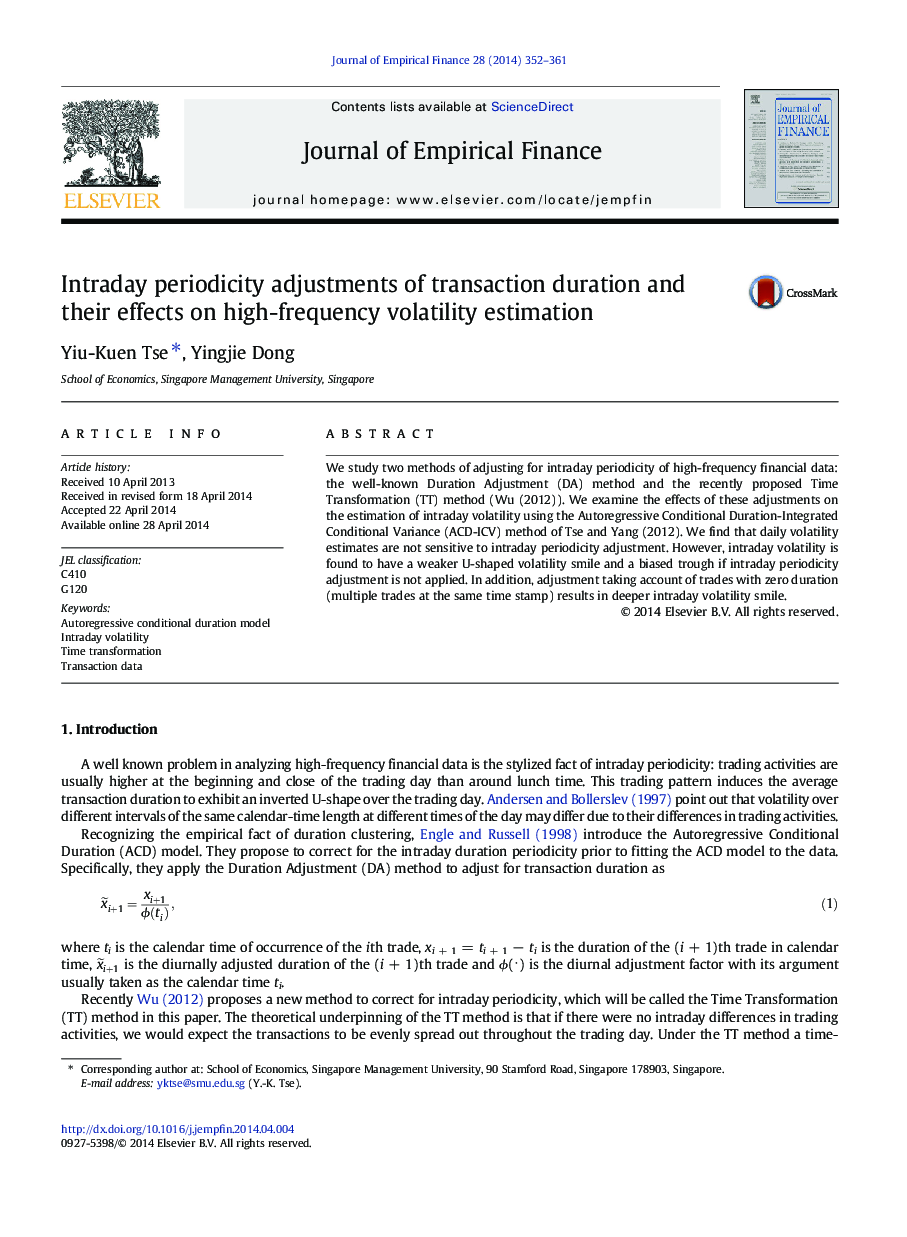| Article ID | Journal | Published Year | Pages | File Type |
|---|---|---|---|---|
| 958766 | Journal of Empirical Finance | 2014 | 10 Pages |
•We study two methods of adjusting for intraday periodicity of high-frequency financial data: the well-known Duration Adjustment (DA) method and the recently proposed Time Transformation (TT) method.•We examine the effects of these adjustments on the estimation of intraday volatility using the Autoregressive Conditional Duration-Integrated Conditional Variance (ACD-ICV) method.•We find that daily volatility estimates are not sensitive to intraday periodicity adjustment.•However, intraday volatility hasa weaker U-shaped volatility smile and a biased trough if intraday periodicity adjustment is not applied.
We study two methods of adjusting for intraday periodicity of high-frequency financial data: the well-known Duration Adjustment (DA) method and the recently proposed Time Transformation (TT) method (Wu (2012)). We examine the effects of these adjustments on the estimation of intraday volatility using the Autoregressive Conditional Duration-Integrated Conditional Variance (ACD-ICV) method of Tse and Yang (2012). We find that daily volatility estimates are not sensitive to intraday periodicity adjustment. However, intraday volatility is found to have a weaker U-shaped volatility smile and a biased trough if intraday periodicity adjustment is not applied. In addition, adjustment taking account of trades with zero duration (multiple trades at the same time stamp) results in deeper intraday volatility smile.
